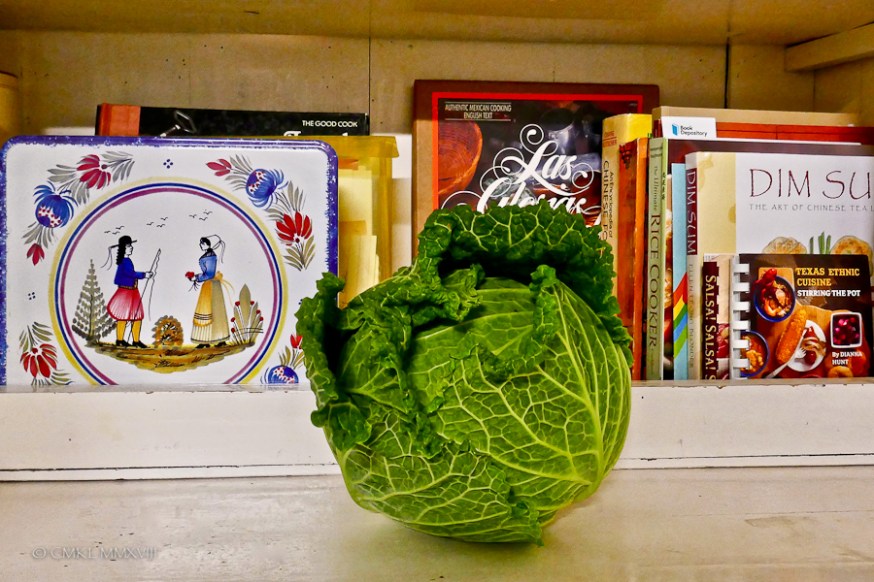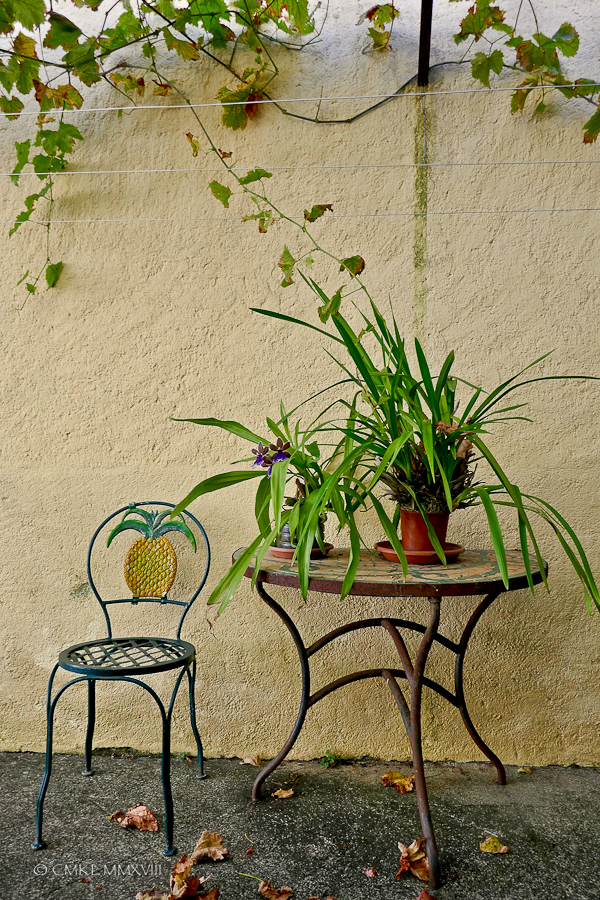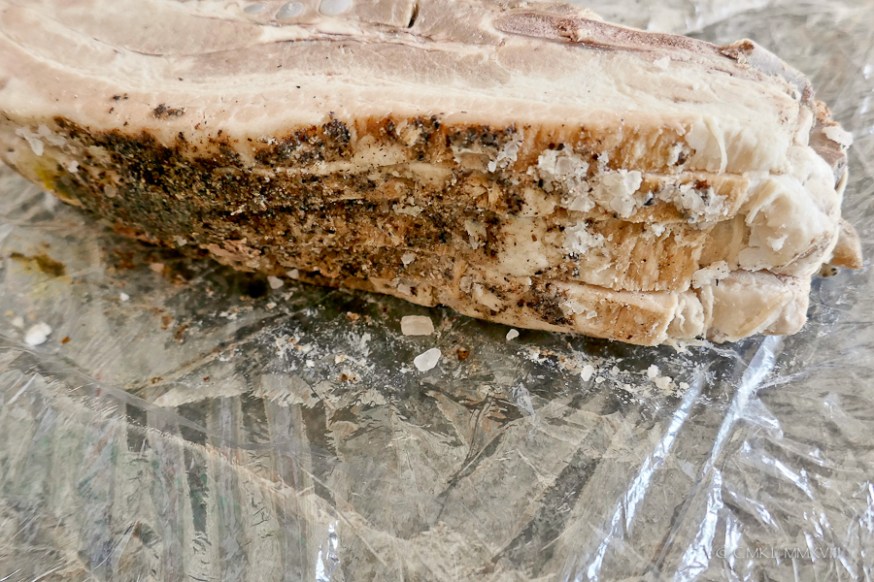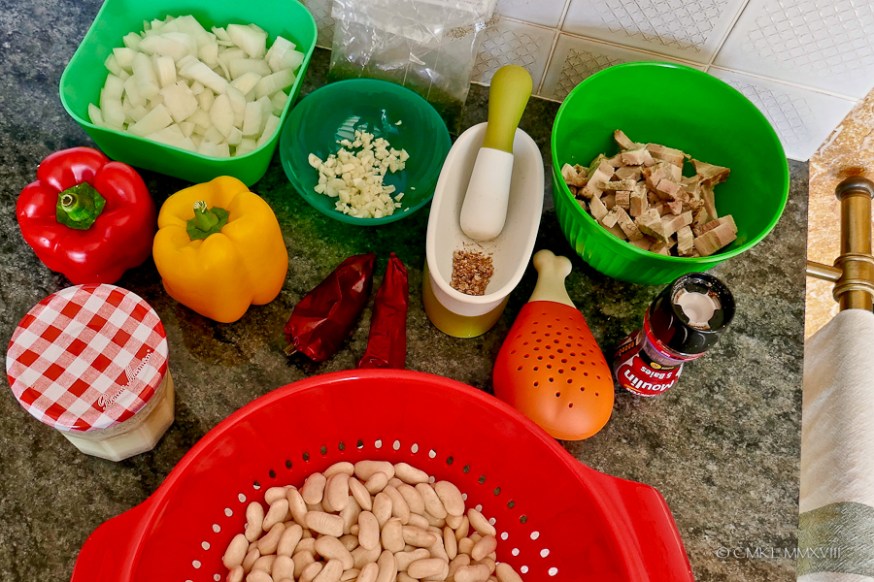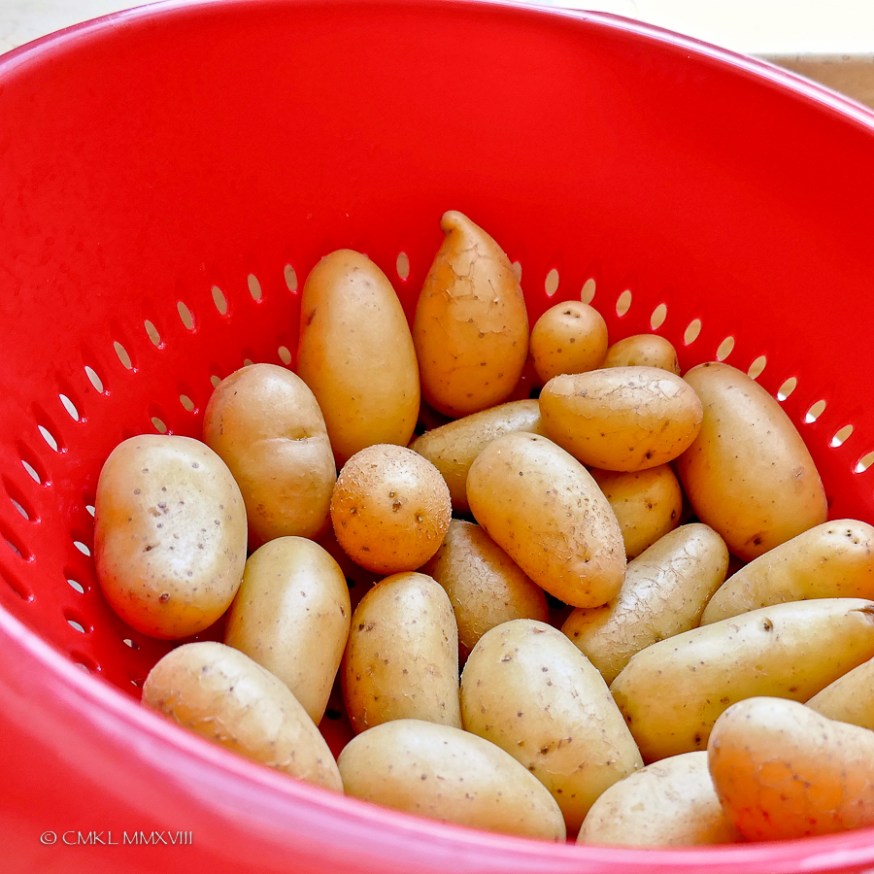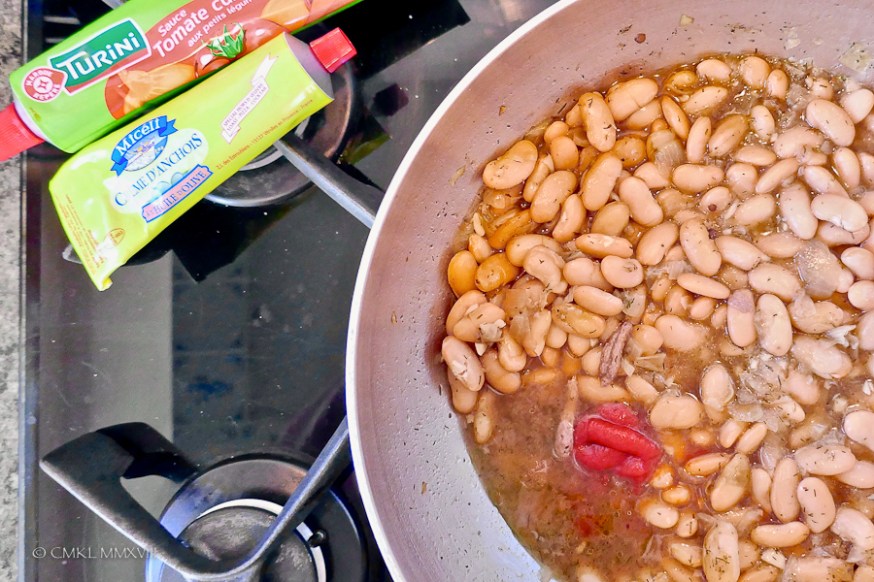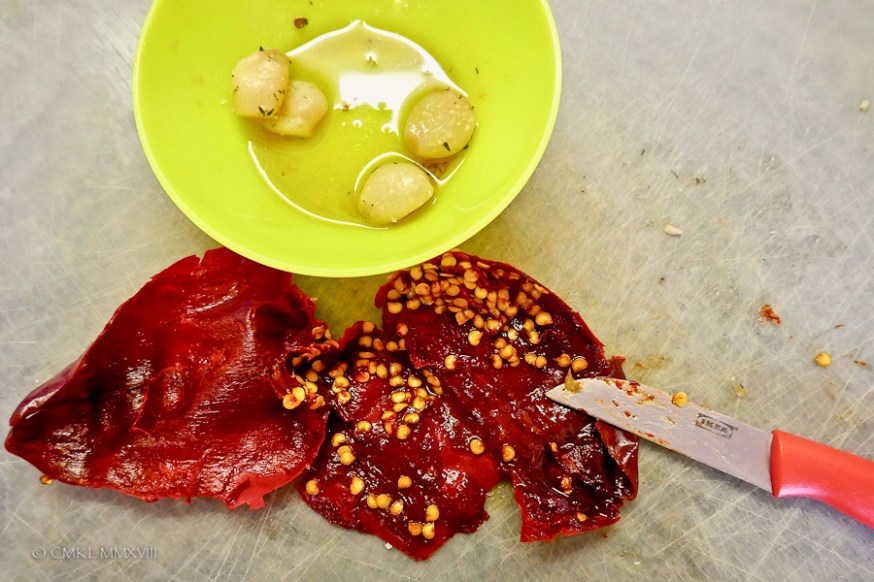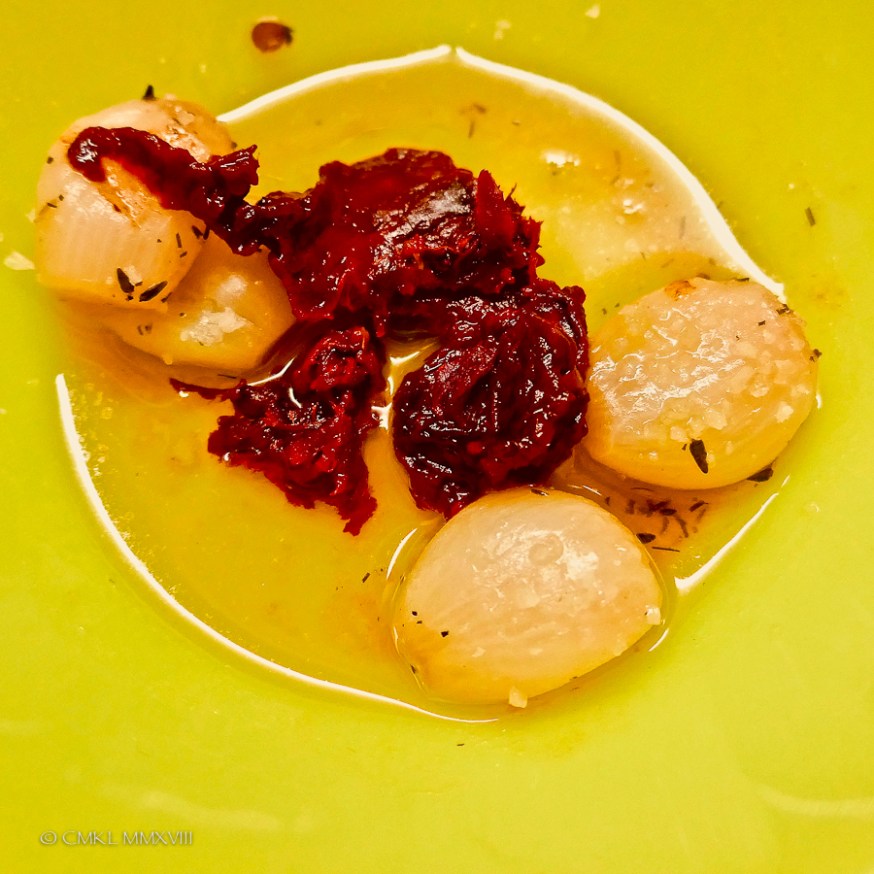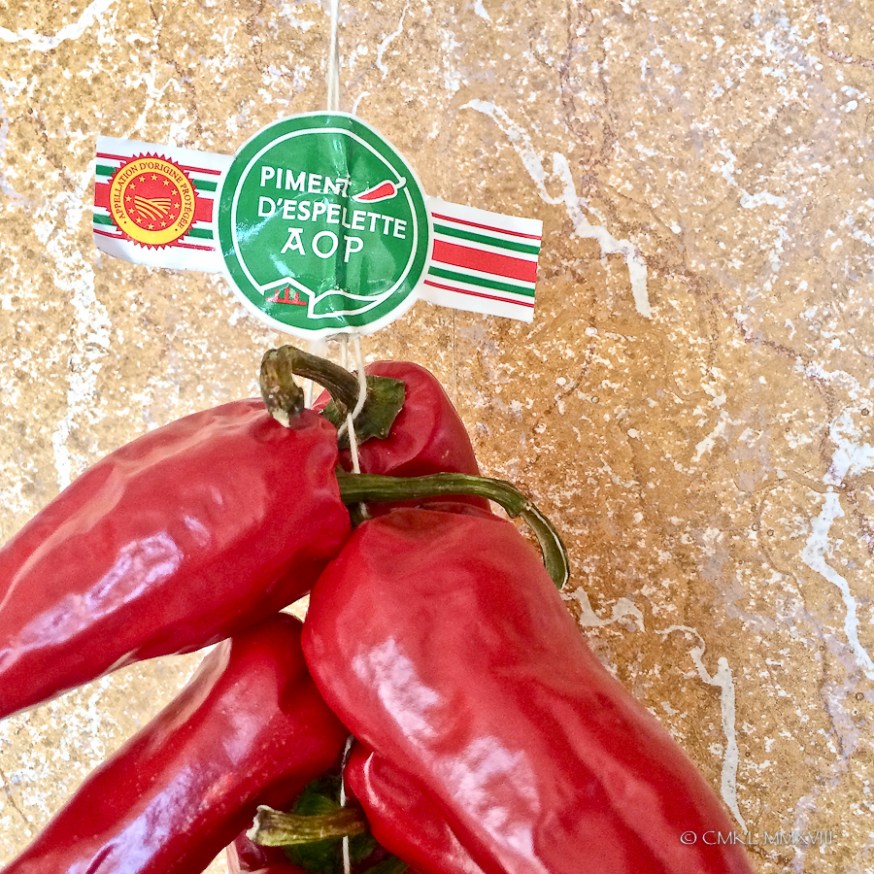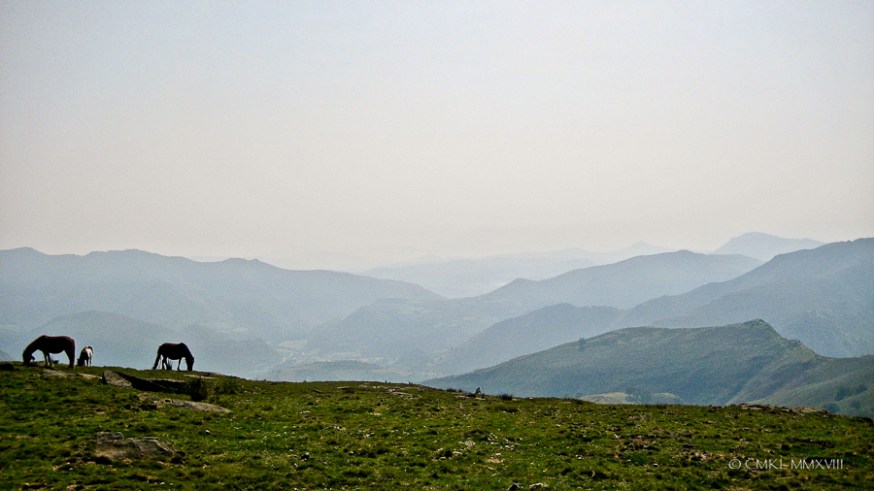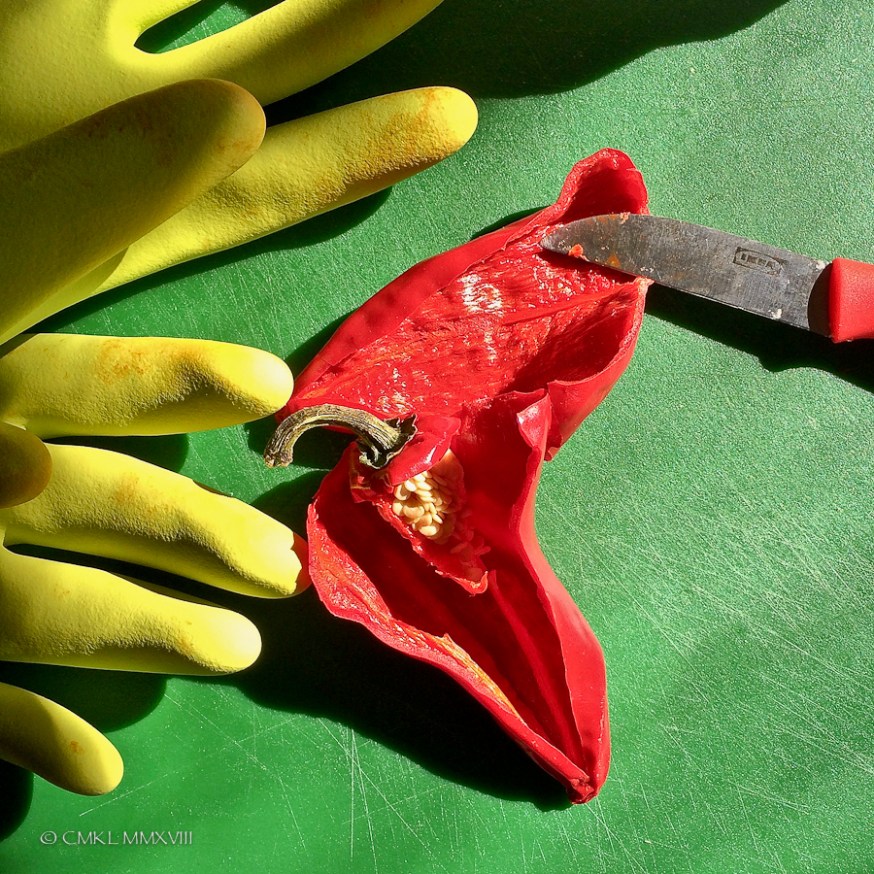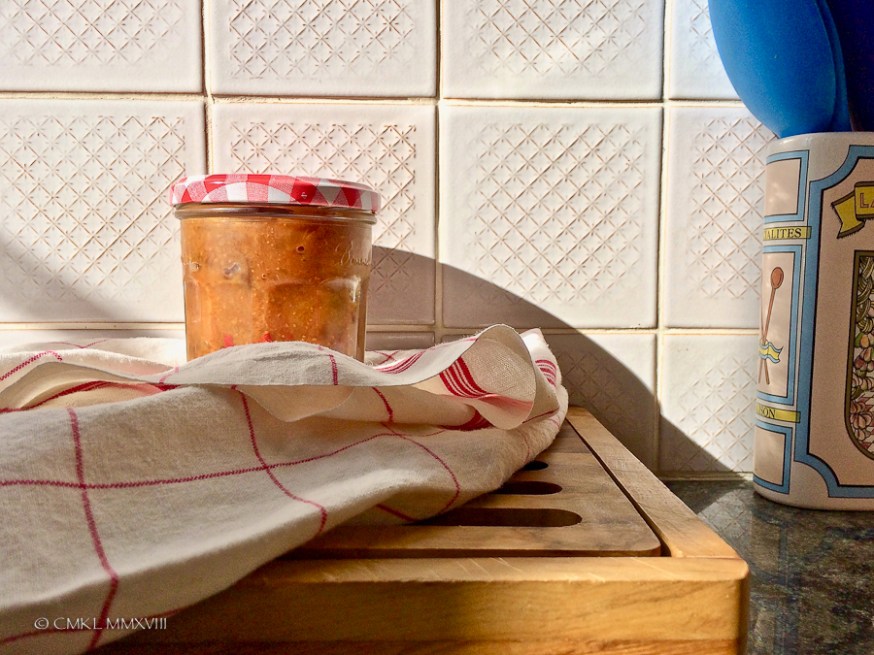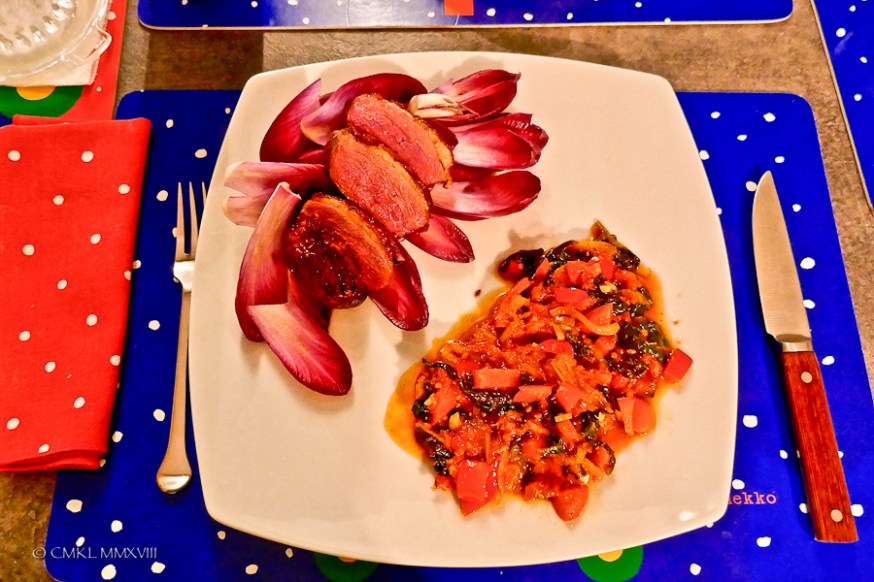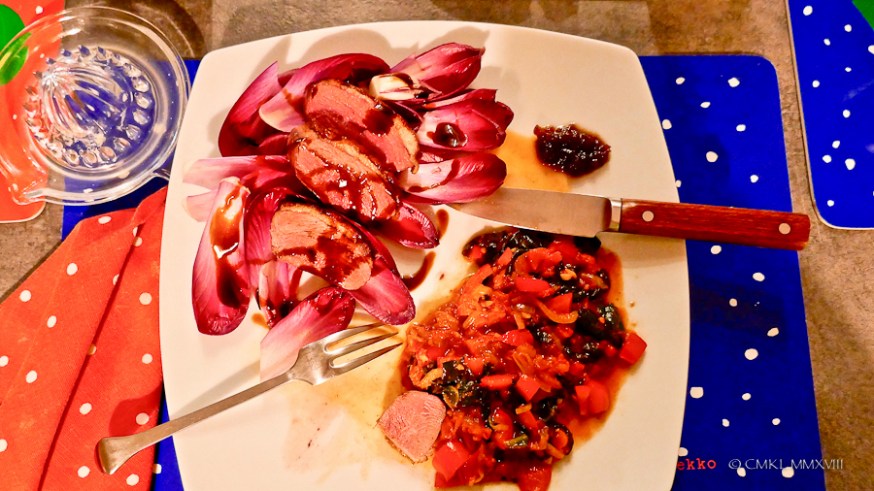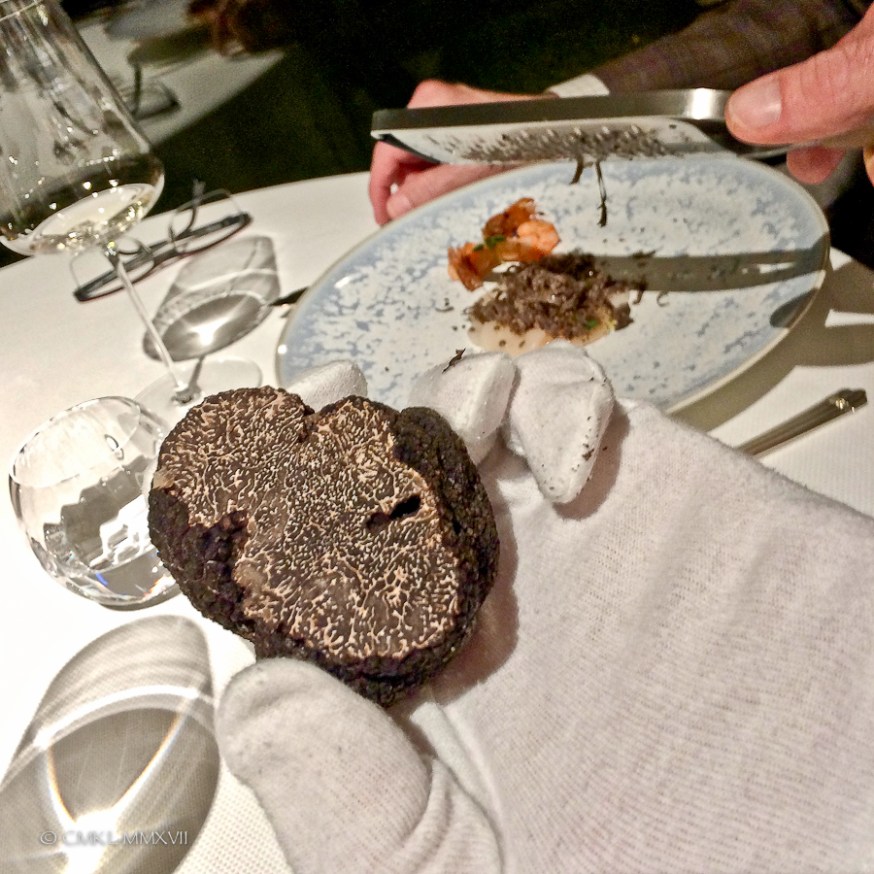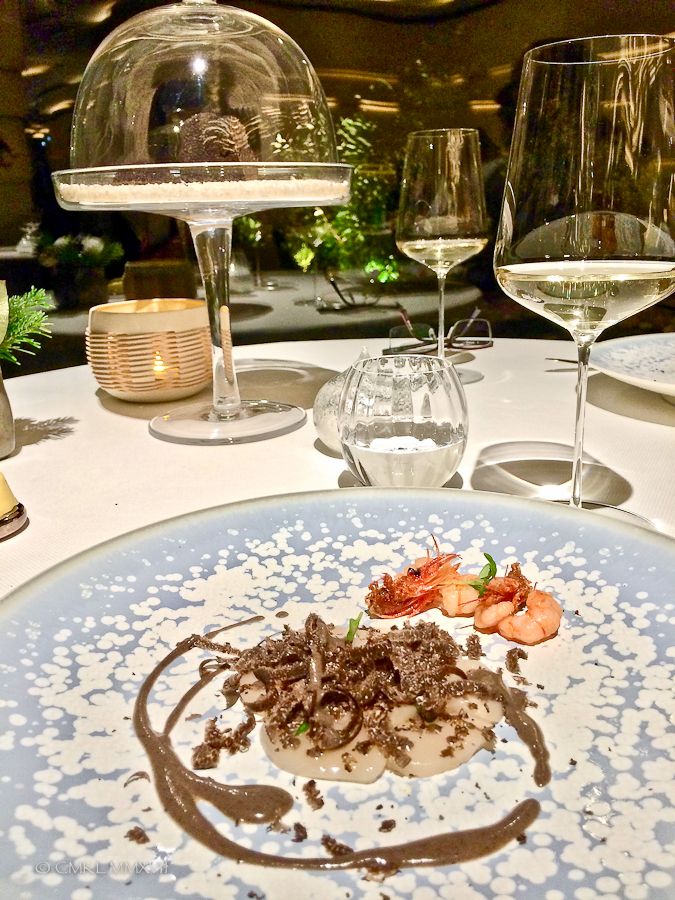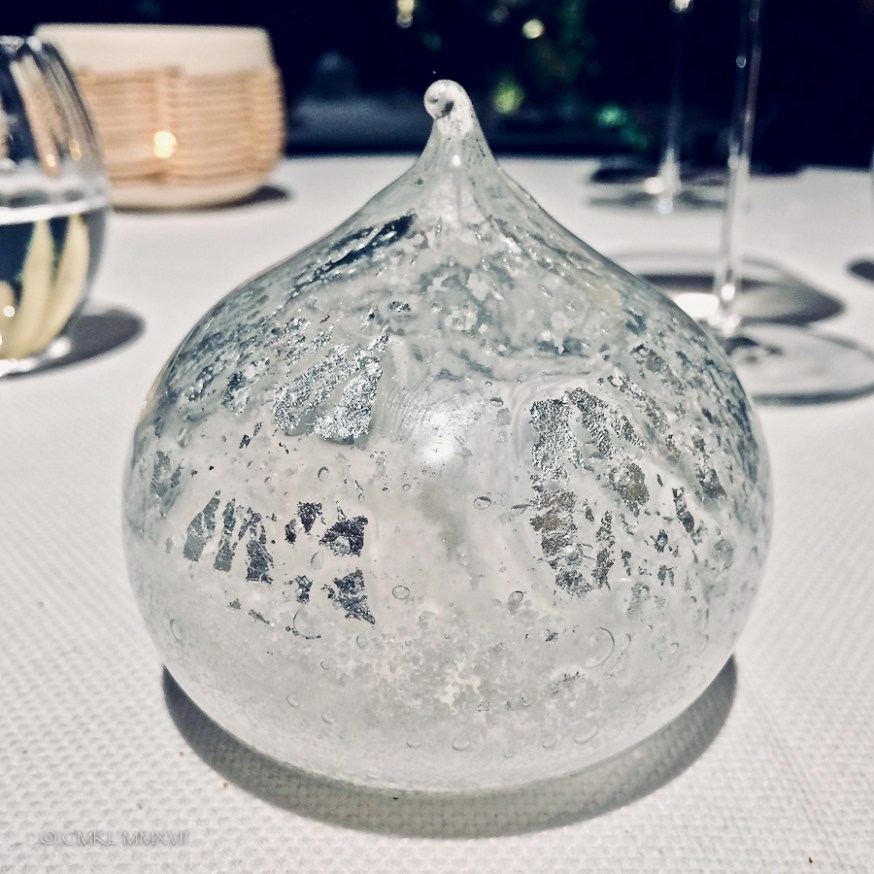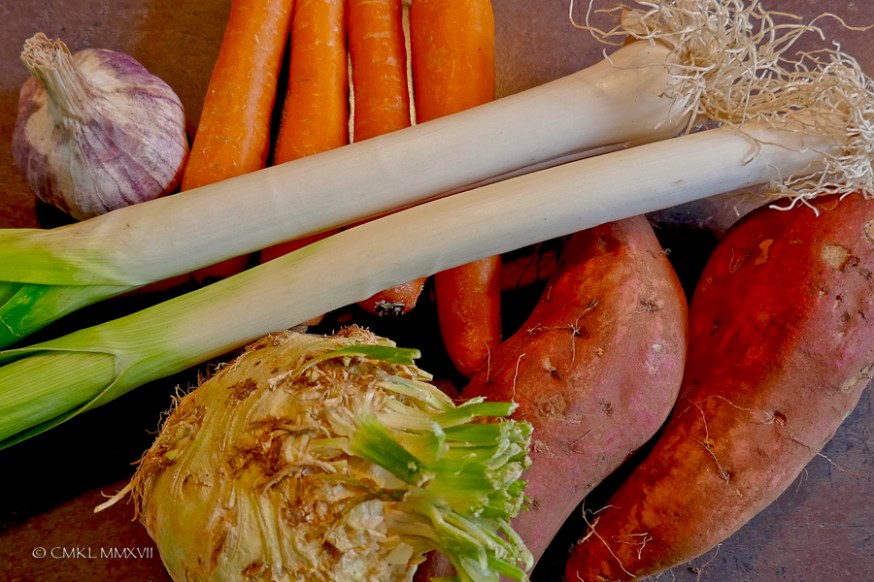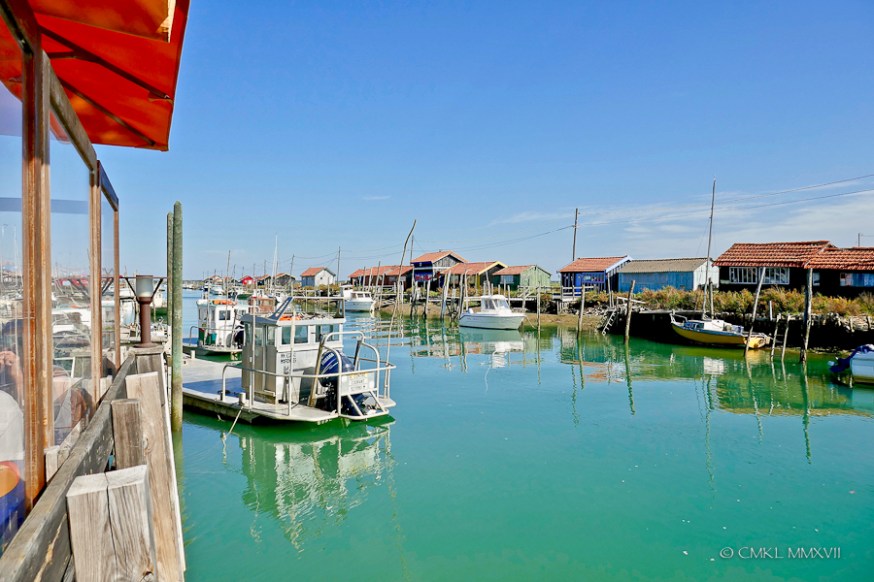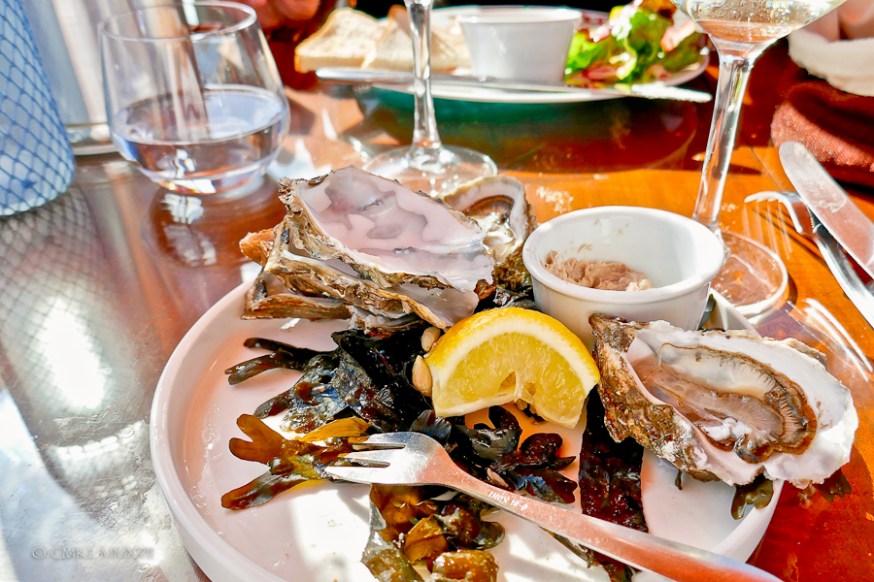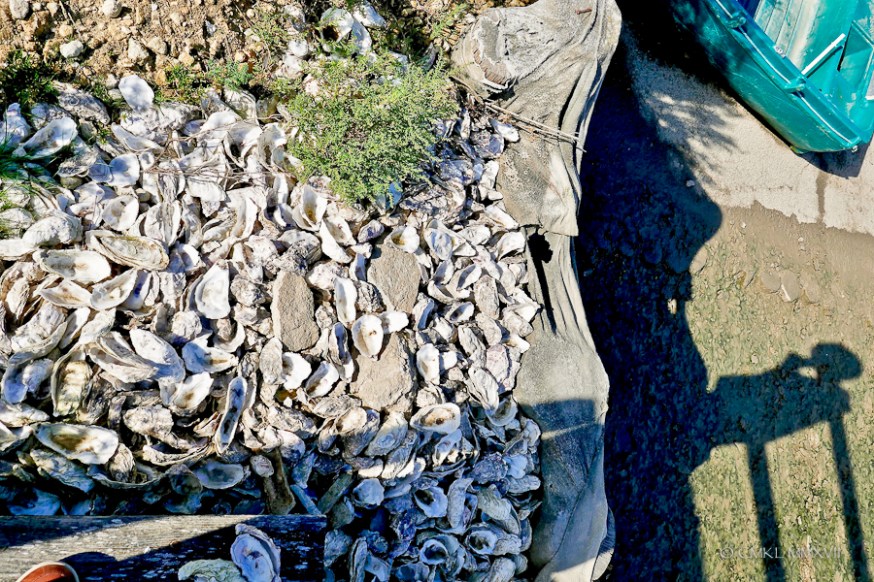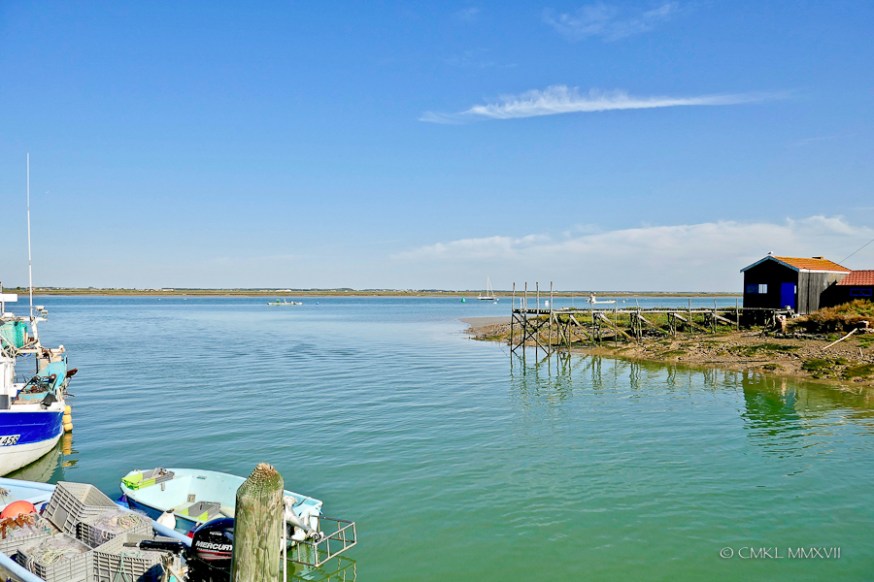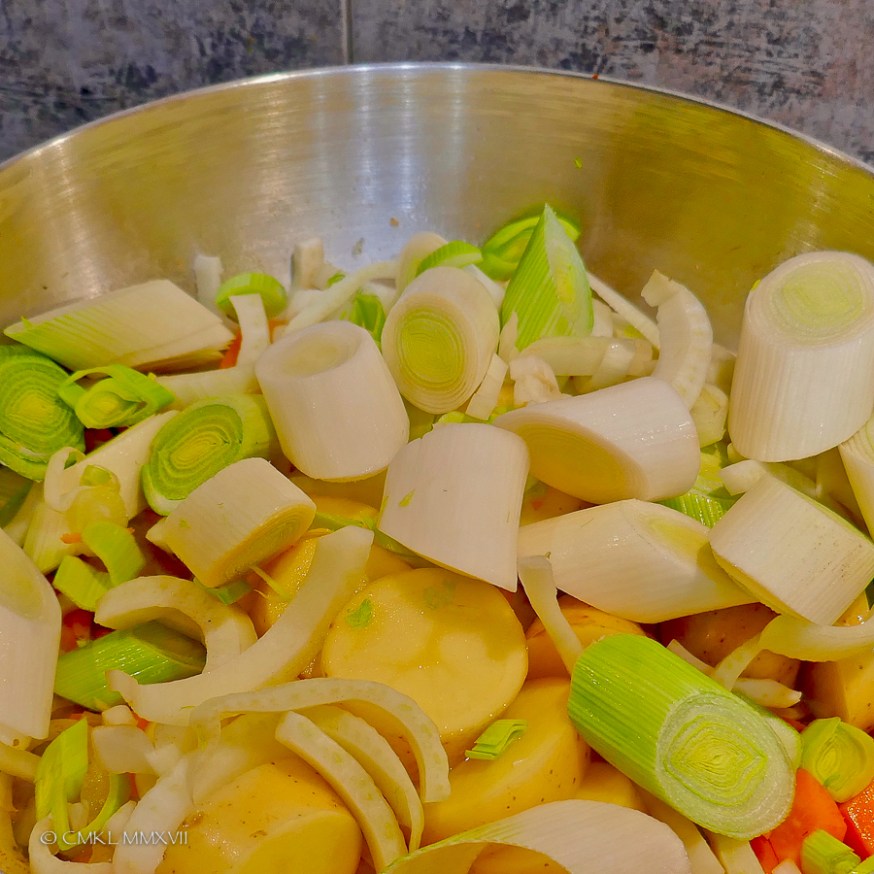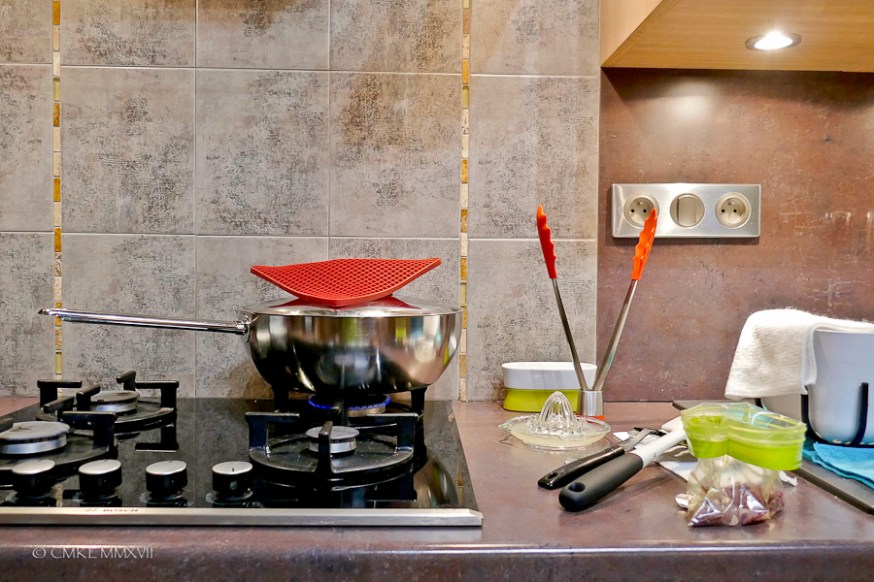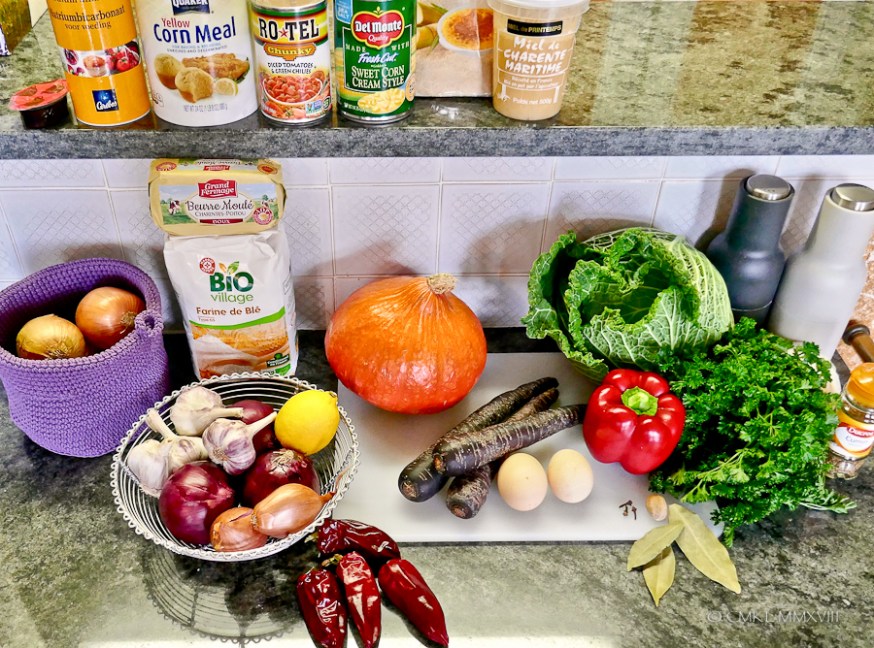
Our mission today is four-fold. Using everything shown above, plus a few additional ingredients like powdered coriander seeds & curcuma, cream, yogurt, duck fat, and, of course, Pfifferlinge, we are tasked to prepare a pot of cabbage stew, a cornbread, a baked potimarron, and, of course, those Pfifferlinge.
Recently we received an order of sorely missed American products from the “My American Market”, a mail-order company in France for American staples, including but not limited to instant jell-O, sweet relish, and crunchy Cheetos. This little package provided the wherewithal to bake my very first cornbread since we left Texas in 2014! And aren’t we all giddy in anticipation?
But first, we have to slice and dice a lot of the fresh ingredients needed for the Wirsing stew, the savoy cabbage you have met in the previous post, and the Pifferlinge in Sahnesoße or chanterelles in cream sauce which around here are known as chanterelles à la crème.

Diced shallots, parsley, and those marvelous, purple carrots
I bought the funky carrots just for the fun of it. They taste just like regular carrots but render much more dramatic images 😎
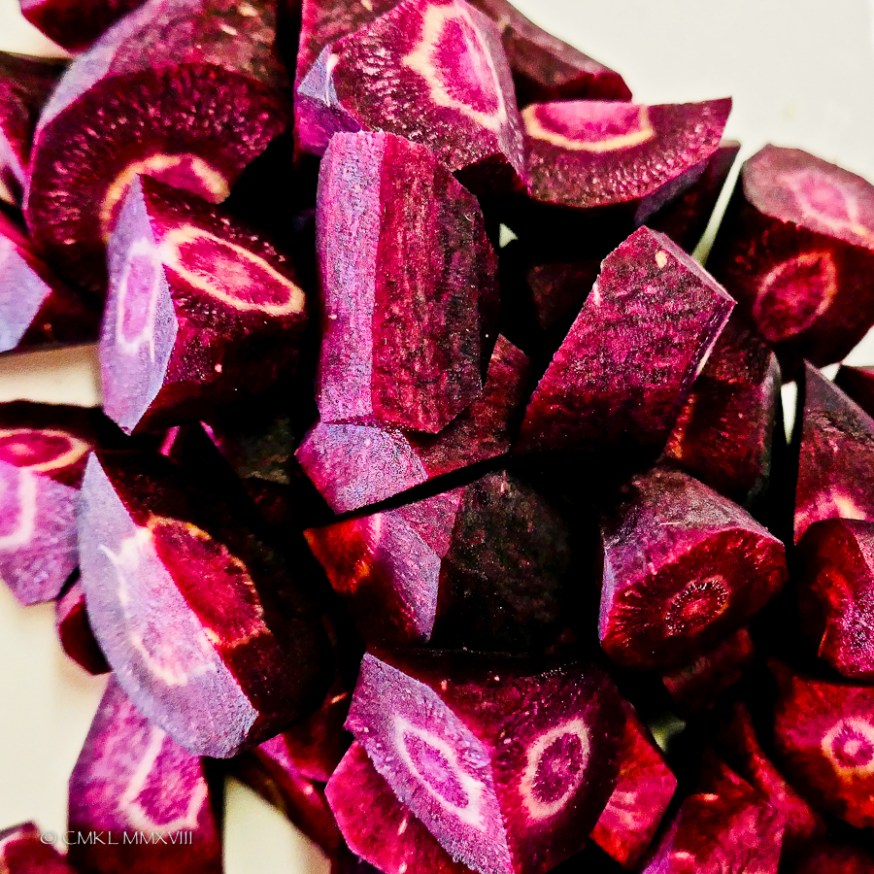
Whenever I pull out my large sauteuse for a one-pot meal, the cooking always starts with dry-toasting some spices. Today, we begin by roasting cumin seeds to a deep brown shade, after which some elbow grease is needed to crush the critters into submission.
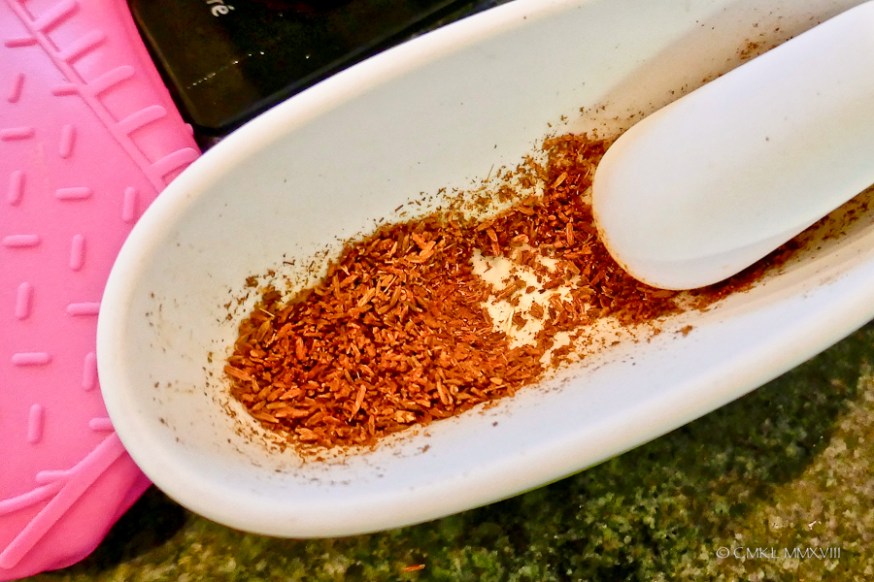
The crushed cumin is then divided between the cabbage stew and the cornbread.

Two yellow onions slowly softening in duck fat and seasoned with crushed, toasted cumin.

Onion in duck fat on the left – shallots in sweet butter on the right
As I keep lecturing you ever so tediously, take your time with your aromatics! Aromatics – as in the in the Genus Allium, not the hydrocarbon aromatics of organic chemistry – need to sweat in low heat to develop their sweet aroma.
When the onions are ready, we rasp some nutmeg over the vegetables and add salt & pepper. We also add 3 cloves and 2 bay leaves in the rubber turkey leg, as well as an additional laurel leaf [it was too large to fit in the turkey leg container], the diced carrots, and 3 cored Espelette chiles, shortly to be followed by a handful of diced red sweet peppers.


… while the shallots one burner over still sweat on their own for a little while longer till the time is right to toss our Pfifferlinge into the pan.
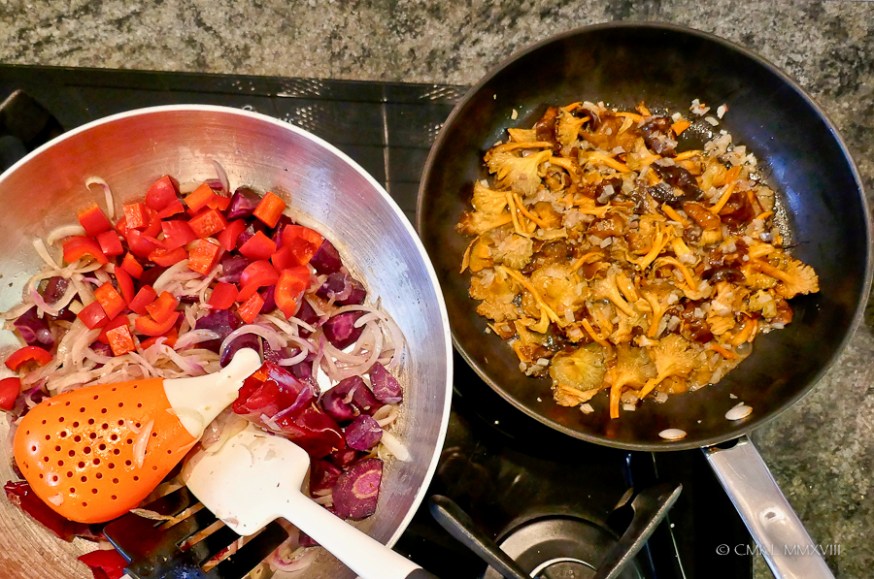
Now we have to focus on the small frying pan because one can’t safely leave one’s chanterelles unsupervised for too long. Soon, very soon, they’ll cry out for some cream.
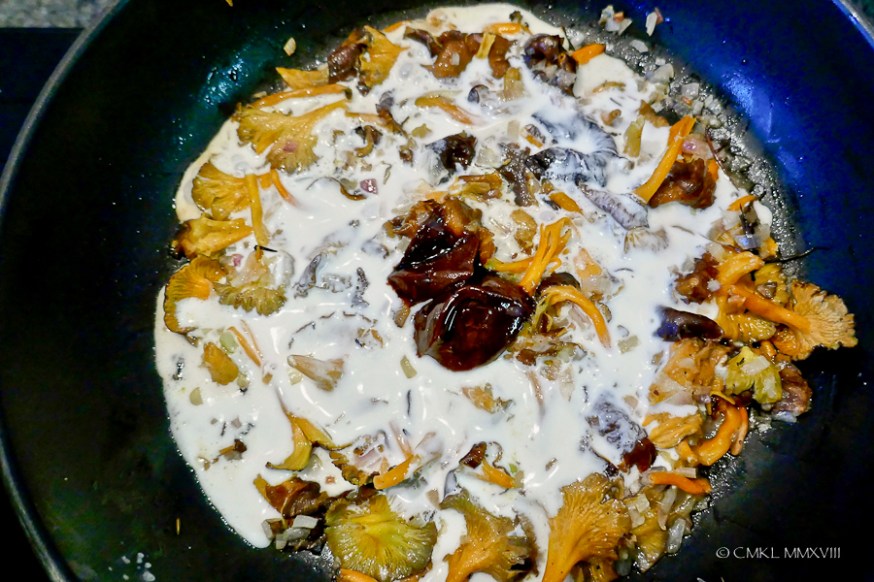
I also incorporated a teaspoon of Knorr “Jus de Rôti”, essentially roast beef essence, with the fungi and cream, before offering the creamy chanterelles with a slice of cornbread as an appetizer to my Longhorn versus Oklahoma watching husband.

Oh yeah, the cornbread! It baked quietly while we were enriching Pfifferlinge mit Sahne 😎


As far as the cabbage stew is concerned, it practically cooks itself. After the bell peppers have made friends with the other ingredients, add the shredded cabbage to the sauteuse, wet it down with some water, season it, and finish it off with cream. All done!


And what about the potimarron, you ask?
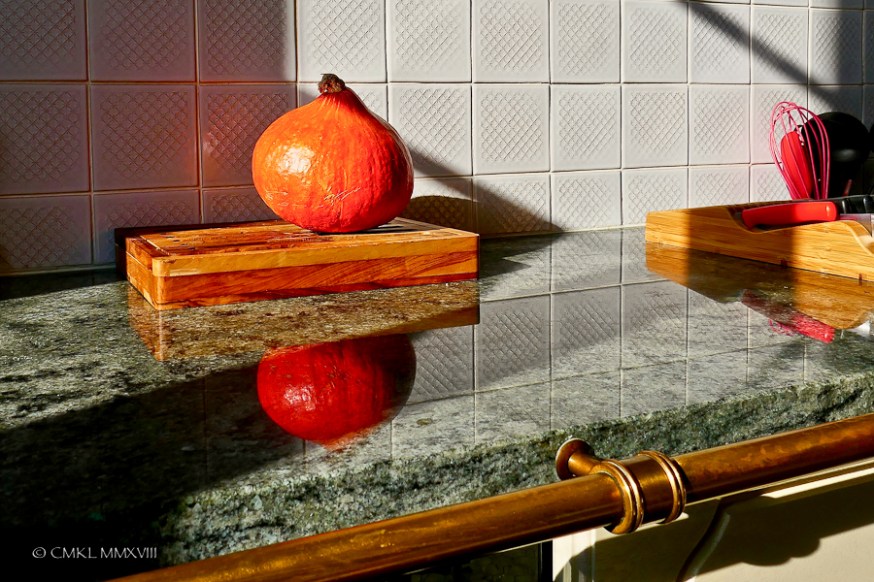
It and the two heads of garlic plus a couple of Espelette chiles roasted in the oven for a good little while. I’ll use them as a base for soup early next week.

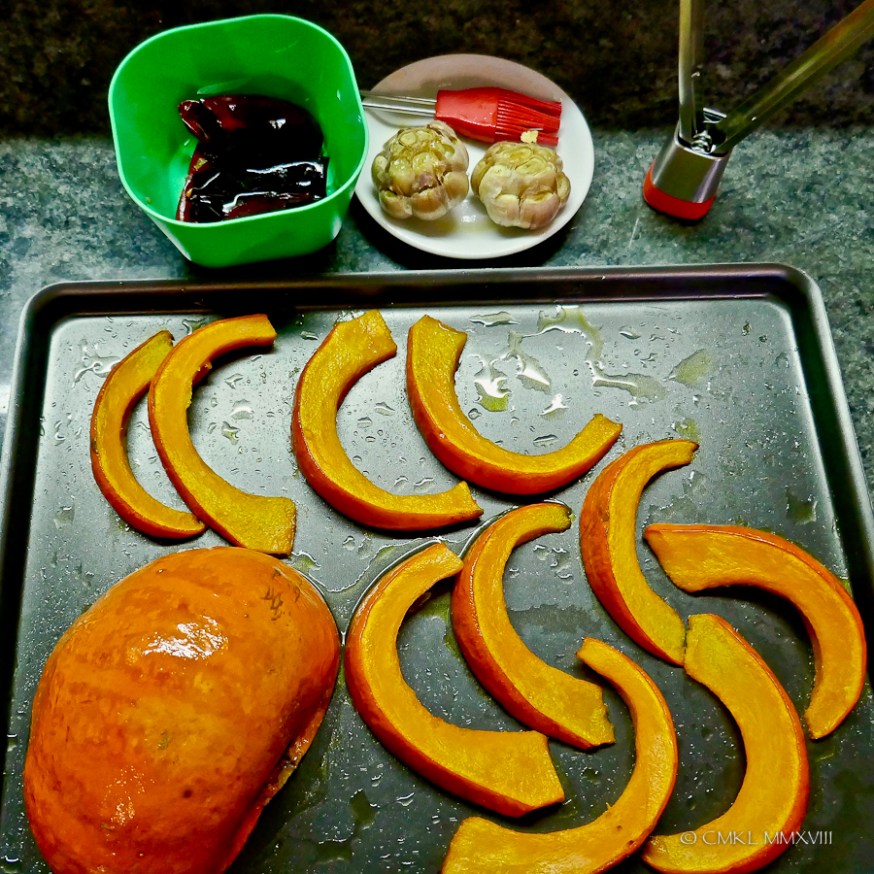
Autumn’s acoming, so there’ll be a lot more rich and belly-warming soups on the agenda! Stay tuned!!

A rough table of contents for
A. Cornbread
- 180 g yellow cornmeal
- 90 g all-purpose flour
- 1/2 tsp baking soda
[If you like your cornbread fluffy, add 1 tsp of baking powder]
- 1/4 tsp salt
- 1 tsp powdered coriander seeds
- 1/2 tsp powdered curcuma
- 5 turns of a peppermill with white peppercorns
- 2 Tbl of light brown cane sugar
Combine the above, then add
- 100 g natural, unflavored yogurt or Kefir [I used Greek-style yogurt]
- 2 eggs
- 2 Tbl honey
- 350 g or most of a can of “Creamed Corn”
- 75 ml olive oil
Mix well, but briefly. Pour the dough into a ~9″/24cm baking dish. Spread remaining creamed corn in a circle around the top and sprinkle remaining crushed, toasted cumin over the creamed corn. Bake at 200ºC/180ºC convection/350ºF for 35 min. plus leave for 5 min in the turned-off oven.
B. Cabbage Stew
- 2 Tbl duck fat
- 1 tsp crushed, toasted cumin seeds
- 1 Savoy cabbage
- 2 yellow onions
- 3 carrots
- 1 red bell pepper
- 3 Espelette chiles, seeds removed
[the chiles just add a bit of heat, I used them because they were around 😎]
- 3 cloves & 3 laurel leaves
- freshly ground nutmeg [~1/4 teaspoon]
- zest of one small lemon
- 250 ml water, more if needed
- cream
C. Chanterelles in Cream
Not much to it. Soften the shallots in butter and gently heat the fungi. Season to taste and finish with heavy cream. Yummy!
D. Potimarron
Ditto. Clean out seeds and stringy stuff, cut up and bake/broil/cook at will!


